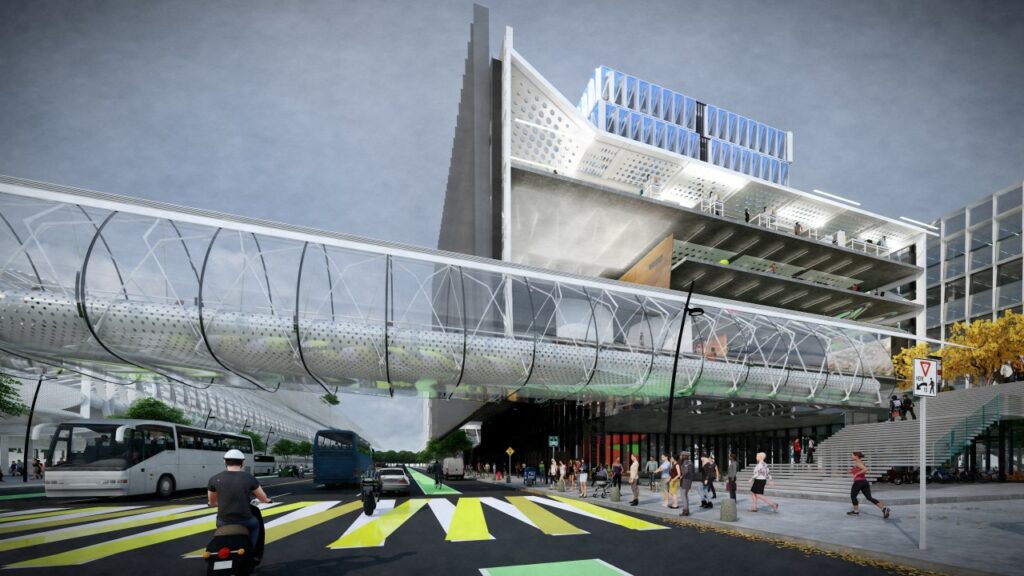Transit Oriented Development (TOD) has proven highly successful in creating vibrant, livable communities that are successful both financially, as well as creating great places for people to live, work, and play. Traditionally known as a type of community development that includes a mixture of housing, office, retail or other amenities integrated into a walkable neighborhood and located within a half-mile of high-quality public transportation, LPA Inc, an award-winning integrated design firm, is elevating TOD one step further with the integration of a school.

TOD projects have grown in number across the country in the last decade, but most TOD has produced higher-end housing, often targeted at empty nesters and/or young, primarily childless professionals, as opposed to families. Bringing to fruition new, ambitious models of TOD that provide opportunities for families of varying incomes will require new thinking by local agencies and developers.
By integrating an innovative educational learning environment into TOD as LPA suggests, this would invent a new type of learning environment and one that enriches by connecting students to an expanded, and vibrant community.

Courtesy of LPA
Inspired by the site of Diridon Station, a major transportation hub which will soon be a key stop for the nation’s first high-speed train and future hub of a mixed-use destination, LPA has conceptualized the integration of a STEM-focused school into the core of a TOD. In this model, students will be able to walk off trains and directly into their school environment. The design breaks down the model of a traditional school, where students stay on campus all day. This TOD design also supports walkability and safety for children and families, a concern for researchers who have seen drastic declines in the number of children walking and/or bicycling to school.

Courtesy of LPA
“Schools located in Transit-Oriented Developments have the potential to provide solutions to some of the biggest challenges facing schools today in highly urbanized areas,” explained Helen Pierce, AIA, Associate / Design Director of LPA. “Beyond that, they would provide opportunities not typically afforded schools, with increased ease of access to the assets of the wider region for community-based learning and proximity to partnerships with local industry,” she added.


Courtesy of LPA
The overall design supports a more flowing, flexible nature of learning that recognizes the advantages of the location. Cost-efficiencies are achieved by cutting the need for parking and combining resources, as well as using space more effectively. And the TOD site expands the reach of where school administrators, teachers and students can live in relation to the school.

Courtesy of LPA
“The most exciting aspect is the ability to create a truly dynamic educational environment that harnesses the vibrancy and connectivity that a TOD would offer. Imagine the educational opportunities that would be opened by having quick and easy access to all the resources the community has to offer coupled with being feet away from some of the world’s most innovative companies,” Helen shared. “The schools also become a major amenity to the TOD rounding out the potential of dense and sustainable mixed-use developments.”

Courtesy of LPA
A transit-oriented site could take the idea of the community as a classroom and make it a reality, leveraging the power of place.




